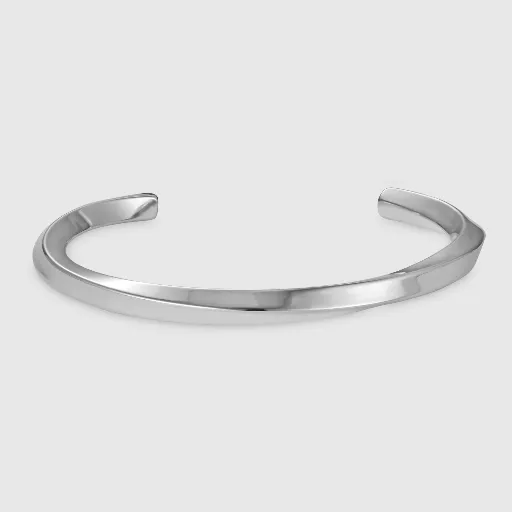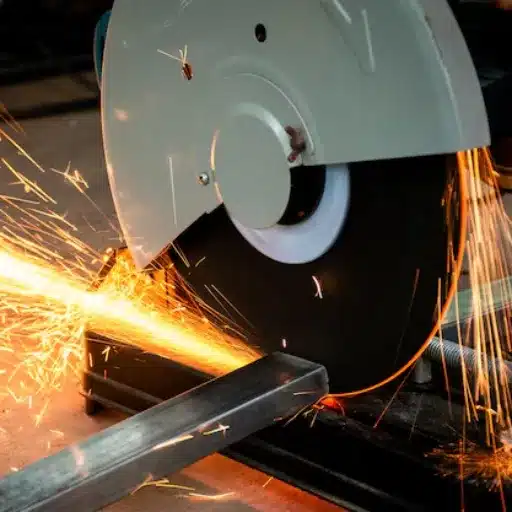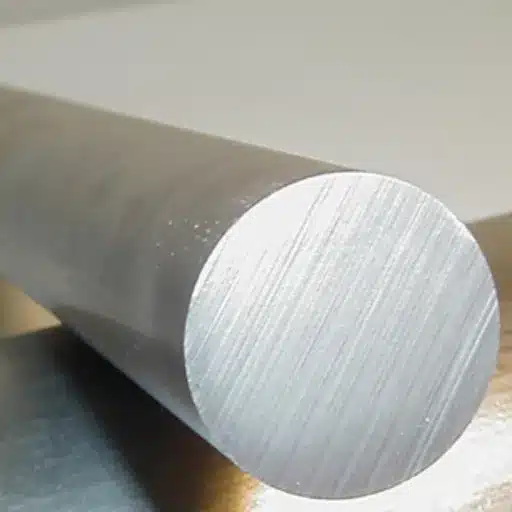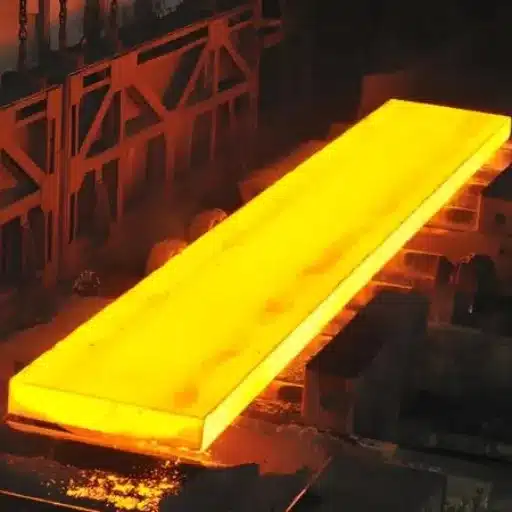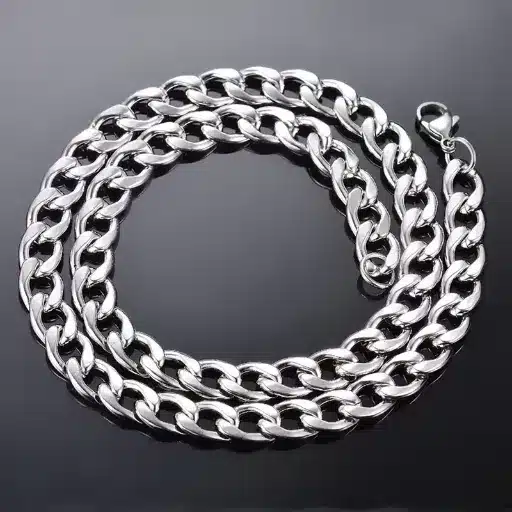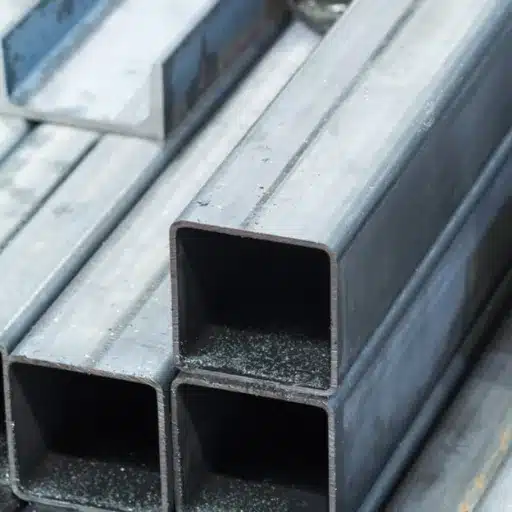In this article, we will examine the durability, corrosion resistance, and broad applicability as some of the key features of 304L stainless steel. Moreover, we will discuss the manufacturing processes, relevant quality standards, and industrial applications of these coils to aid you in making reasonable choices for your projects or business. This guide will help anyone, whether an experienced expert or a novice, understand the reasoning behind the significance of 304L stainless steel coils in the market.
What are the key features of 304L stainless steel coils?
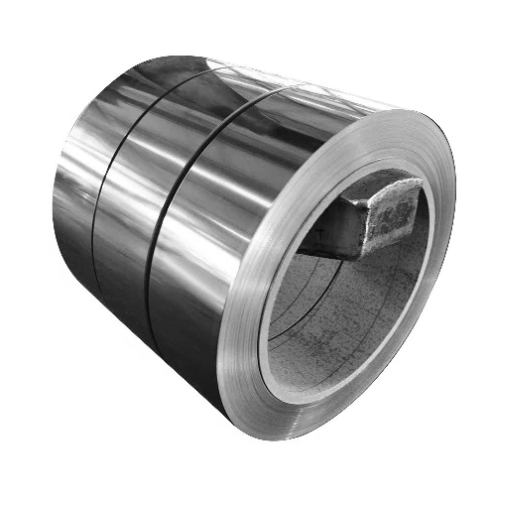
The 304L stainless steel coils have incredible features such as low carbon content, which makes this type of coil ideal for welding applications, undergoing several processes while still maintaining excellent corrosion resistance and durability. They retain strength and flexibility even in harsh conditions. In addition, the coils are noncorrosive and can withstand different temperatures. Because these coils have high levels of oxidation resistance and are easily fabricated and low maintenance, they are a preferred choice for several industries, such as construction, automotive, and chemical processing.
Understanding the composition of 304L stainless steel
Iron, chromium, and nickel make up the composition of 304L stainless steel. Approximately 18-20% of the make-up is chromium, and 8-12% is nickel. With a carbon content of less than 0.03%, the risk of carbide precipitation during welding is low, and corrosion is minimal. This improves self-durability and enhances flexibility and the ability to withstand chemicals and temperature. Using these elements enables strong mechanical properties while ensuring ease of fabrication and maintenance.
Corrosion resistance properties of 304L stainless steel
304L stainless steel has remarkable corrosion resistance because of its low carbon value and high composition of chromium (18-20%) and nickel (8-12%). This alloy is generally corrosion-resistant in atmospheres, fresh water, and mild chemical interactions. It also shows excellent resistance to oxidizing agents like nitric acid and moderately aggressive organic acids.
One of the primary advantages of 304L is during welding processes. This type of stainless steel dramatically reduces the risk of intergranular corrosion, which is the dissolution of grain boundaries of certain metals that make welded joints brittle. In addition, 304L stainless steel has maintained its integrity to corrosion attacks in temperature environments with a maximum operating temperature of about 870°C (1598°F) under intermittent service and 925°C (1697°F) under continuous service.
While 304L has an advantage over many corrosive environments, it is not for use in high chloride concentration environments, such as marine environments, due to its potential susceptibility to pitting and crevice corrosion. Other grades, like 316L stainless steel, which has added molybdenum, may be more appropriate for such conditions. In general, 304L stainless steel has excellent versatility and balanced corrosion resistance, which makes it a preferred candidate for structural, chemical, and food processing applications.
Mechanical properties and durability of 304L coils
304L stainless steel coils have known mechanical properties, making these materials highly durable. This alloy possesses suitable strength, good ductility, and corrosion resistance, making it versatile for multiple uses. Key technical parameters comprise nearly 485 MPa (70 ksi) of tensile strength, 170 MPa (25 ksi) yield strength, and an elongation of 40% in 2 inches. It also provides flexible and resilient material to stress. Moreover, lower carbon content increases resistance to carbide precipitation during welding, thereby adding to its corrosion resistance. Although 304L performs well in a wide range of environments, ensuring it does not suffer from exposure to highly corrosive environments for long periods is essential for preserved durability.
How does a 304L stainless steel coil factory ensure product quality?
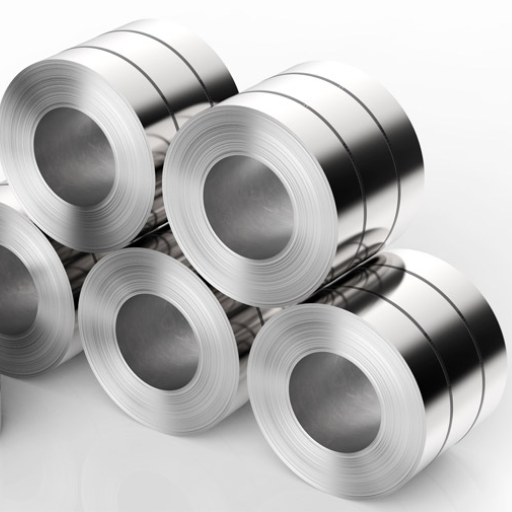
A factory producing a 304L stainless steel coil maintains product quality by applying rigorous procedures and modern techniques. Some of the procedures followed are high basic raw materials, accurate melting and alloying, and complete quality control inspection of every stage. These factories also use ultrasonic tests, spectral analyses, and surface finish inspection control procedures to comply with strict industry requirements. Reliability and uniformity of the end product are further ensured by ISO certification and compliance with international legislation.
Quality control measures in 304L stainless steel production
We implement effective, advanced quality control measures for our operations. This allows us to maintain high standards and source the best raw materials. Meticulous inspections of surface finishes, ultrasonic testing, spectrochemical analysis, and alloying and melting guarantee that each batch passes our standards. All products are ISO certified and compliant with other international regulations to ensure the reliability and performance of our raw 304L stainless steel coils. We stand by our promises of durability and corrosion resistance by attaining the required standards.
Importance of annealing in 304L stainless steel coil manufacturing
The annealing process is vital in producing 304L stainless steel coils because it improves the mechanical features and efficiency of the coils. The controlled heating and cooling in the steel’s ecosystem modify its microstructure, making the steel more ductile, corrosion-resistant, and relaxed in internal stresses. Furthermore, in the case of extreme stress demands, the material would perform consistently durably over some time. Also, incurring these metal coils improves the metal’s machining and welding capabilities, thus increasing the industrial application range. Here, we focus on the annealing steps to grant clients high-quality stainless steel 304L coil products for industrial projects.
Testing and certification processes for 304L stainless steel coils
The testing and certification are significant in guaranteeing the quality and functionality of 304L stainless steel coils. At first, a material composition analysis via spectroscopic technique is performed to check if this raw material meets chemical standards such as ASTM A240. Furthermore, structural testing involves several mechanical tests, including minimum tensile strength tests (485 MPa) and yield strength (170 MPa), followed by evaluating the material’s stiffness, typically under 92 HRB. Hardness testing methods like Rockwell B (HRB) or Brinell methods confirm these requirements or compliance.
Also, only these two methods accommodate both internal flaws and surface defect detection: ultrasonic testing and eddy current testing. The ASTM A262 intergranular corrosion test assures corrosion resistance and proves efficiency in harsh conditions. These tests are consolidated with dimensional inspections that check the coils against their thickness width and flatness tolerances set by the client or other governing standards.
Traceability and proof of compliance are guaranteed for the tests by issuing certifications. Mill test certificates MTCs compliant with EN 10204 3.1 or 3.2 are issued, including chemical composition, mechanical properties, and other tests performed for the product to be credible. At our facility, this level of scrutiny guarantees that 304L stainless steel coils undergo the requisite industry quality checks while being top-grade for multiple uses.
What are the typical applications for 304L stainless steel coils?
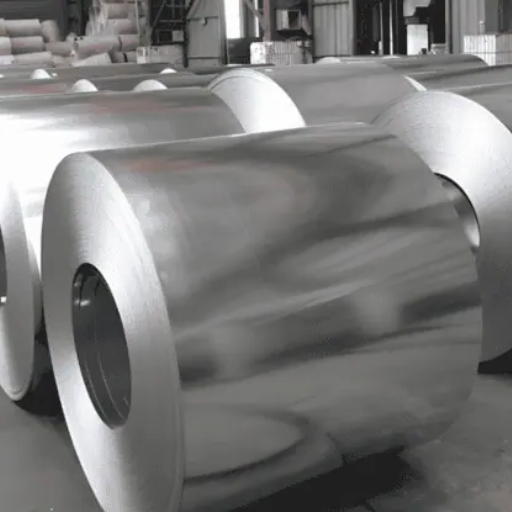
Due to their highly beneficial properties, such as corrosion resistance, exceptional durability, and weldability, 304L stainless steel coils are preferred in the food and chemical processing industries, in manufacturing food and beverage systems, and in the construction of heat exchangers and storage vessels. These products are further applied to architecture, cars, and medical equipment components, showcasing the product’s dual market appeal.
Use of 304L stainless steel in the automotive industry
The remarkable corrosion resistance, durability, and strength of this steel grade make 304L stainless steel one of the most used materials within the automotive industry. It is extensively employed in exhaust systems, structural parts, and catalytic converters. It can endure high temperatures and harsh environments; its low carbon content increases corrosion resistance in the welded parts. It can also be economically and reliably fabricated, ensuring vehicle safety and reliability.
Applications in Food Processing and Chemical Industries
This steel grade also enables the seamless fabrication of industrial equipment in the food and chemical industries, which improves hygiene standards. 304L stainless steel is now widely used for building storage tanks, pipelines, and food-grade processing equipment. The steel’s low carbon percentage prevents carbides from forming during the welding process, which provides great resistance to corrosion and high temperatures.
304L stainless steel is safe for food processing because it does not contaminate food or give it a metallic taste. It withstands severe scrubbing with strong sanitizers, making it a staple for cleaning in the dairy sector, brewery tanks, and cooking surfaces. Bacterial growth is hazardous, so surface finishes such as 2B or #4 are used to maximize cleanliness.
In the chemical industry, 304L stainless steel performs well in corrosive acids such as acetic and citric acid. It is assigned to work with an upper limit of 870°C (1,598°F) and pressure without losing structural integrity. This makes it perfect for heat exchangers, reactors, and chemical storage containers. The material’s long-term adversity with oxidizing and reducing environments is due to its high content of chromium (18-20%) and nickel (8-12%).
304L stainless steel coils in construction and architecture
The resistance of 304L stainless steel coils to corrosion and aging and their aesthetic value make them favorable for building and architectural purposes. Widely relied upon for cladding, roofing, and support elements, these coils have rigid strength combined with the bendable features required by prancing designs. Its lower carbon content helps reduce the chance of carbide precipitation during welding, which maintains seam integrity while minimizing brittle fracture and maintenance.
Tensile strength for 304L stainless steel coils is 485 MPa (70,000 psi), yield strength is 170 MPa (25,000 psi), and elongation is 40% at 50 mm. Material density is about 8 g/cm³, and the boiling range is 13991454 °C (25502650 °F). With these qualities, 304L coils are perfect for high-powered performance architecture that demands the use of robust materials but needs to be exquisitely elegant.
How do 304L stainless steel coils compare to other grades?
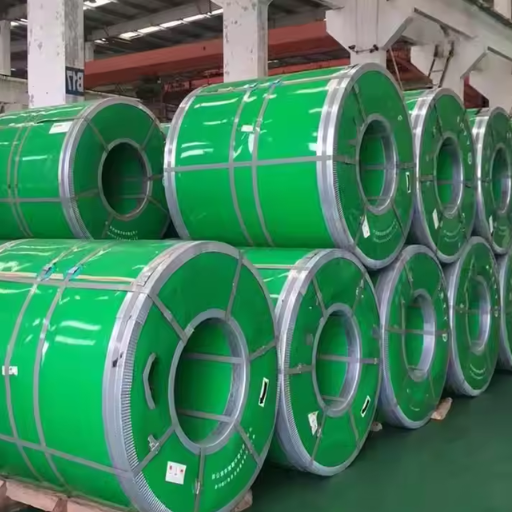
The primary distinction between the 304L stainless steel coils and others is the carbon content in the coils; it is lower, which enhances their weldability relative to standard 304 stainless steel. This feature makes them well-suited for applications that involve frequent welding due to the lowered risk of sensitization and carbide precipitation. 304L is also more economical than 316 stainless steel, which offers better application because of the added molybdenum for excellent corrosion resistance. 304L also outperforms oxidization resistance and ductility compared to 430 stainless steel, which is ferritic and does not contain nickel. For this reason, 304L coils are ideal for a cost-effective solution with needed quality.
304L vs. 304: Understanding the differences
304L and 304 stainless steel are austenitic grades used for their exceptional versatility and corrosion resistance qualification. However, there are sharp contrasts that make them suitable for different use cases:
- Carbon Content: The primary difference is in the carbon composition. 304 contains up to 0.08% carbon, while 304L (“L” for low carbon) has a maximum of 0.03%. The reduction in carbon concentration in 304L reduces the chances of carbide precipitation during welding, delaying intergranular corrosion.
- Weldability: Due to its low carbon content, 304L is better suited for smooth welding and high-heat procedures, as the chances of heat-affected zone cracking occurring are much lower.
- Mechanical Properties:
304:
- Tensile Strength: Roughly 515 MPa.
- Yield Strength: Roughly 205 MPa.
- Elongation at Break: Approximately 40%.
304L:
- Tensile Strength: Typically lower around 485 MPa.
- Yield Strength: Same Weld Strength as 304: around 170 -180 MPa.
- Elongation at Break: Slightly older, Roughly 45%, due to enhanced ductility.
- Corrosion Resistance: Both provide excellent corrosion resistance, but I favor level 304L over 304 in cases where welding is required because it decreases the risk of sensitization.
- Cost: Pricing for both grades is estimated to be in the same range; however, specific pricing may differ due to differences in supplier and application needs.
Key Applications
- 304 grade is typically used for general-purpose applications, structural parts that don’t require frequent welding, and kitchen appliances with negligible corrosion risk.
- 304L is preferable for welded constructions, piping, and vessels used in chemical, dairy, and pharmaceutical industries where post-weld corrosion mitigation is paramount.
To make the best choice between the two grades, you need to evaluate the operational conditions, welding preferences, and service life expectancy.
Comparing 304L to 316 and 430 stainless steel grades
The way I see the different grade options, the 304L, along with the 316 and 430 stainless steel grade, is has very distinct features is comparably more economical, however, what it lacks is versatility. 316, on the other hand, is ideal where molybdenum and its enhanced resistance to chlorides and harsher environments make it perfect for marine applications or chemical processing where more excellent corrosion resistance is needed. Ferritic stainless steel also exemplifies the 410 grade, which has less ductility than grade 304L and, as a result, has lower corrosion resistance but is cheaper and suitable for decorative and mild indoor environments. Various factors must be considered, including the specific surrounding environment, budget, and mechanical properties that dictate what will work ideally.
Benefits of 304L over 201 stainless steel for specific applications
Compared to 201 stainless steel, 304L stainless steel is more advantageous in many applications. To begin with, steel has better corrosion resistance, which is of particular concern outdoors and in marine environments with higher moisture and chloride exposure; as such, it is applicable in aquatic settings. This grade also has better weldability due to lower carbon content, which reduces the risk of sensitization and intergranular corrosion due to welding. In addition, the steel’s ductility is more valuable than the greater hardness 201, making 304L more useful during forming processes, which is difficult with 201. Although 201 stainless steel has a price advantage, the cost of using 304L, especially in demanding applications, is often justified due to enhanced durability and longevity of service.
Key Technical Parameters:
- Carbon Content: 304L ≤ 0.03% vs. 201 ~ 0.15%
- Nickel Content: 304L ~ 8-12% vs. 201 ~ 4-6% (better ability to resist corrosion)
- Chromium Content: 304L ~ 18-20% vs. 201 ~ 16-18%
- Tensile Strength: 304L ~ 485 MPa vs. 201 ~ 515 MPa
- Yield Strength: 304L ~ 170MPa vs 201 ~ 275MPa
- Elongation (%): 304L ~ 40% vs. 201 ~ 30% (greater ductility)
The parameters of these two grades illustrate that 304L is superior in corrosion resistance, flexibility, and reliability when dealing with specific industrial and structural needs.
What should you consider when choosing a 304L stainless steel coil supplier?
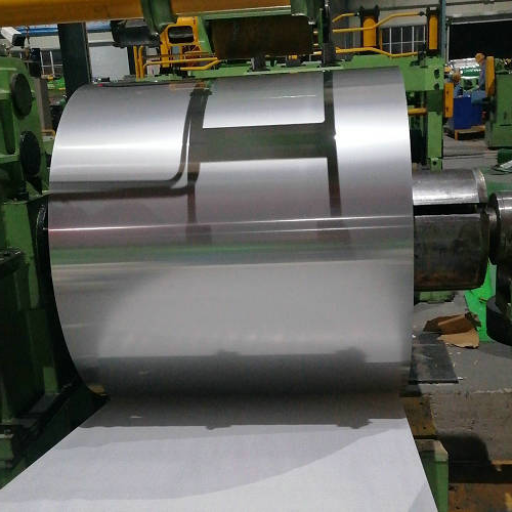
Consider the following points while selecting a 304L stainless steel coil supplier to ensure accuracy and dependability:
- Certification of Materials: Ensure the certifying supplier holds the documents proving the stainless steel 304L coils adhere to the covenanted international standards. In doing so, the chemical composition and mechanical features will undoubtedly be within the desired specifications.
- Supplier’s Standing and Know-How: Detach and scrutinize any relevant reviews and recommendations regarding a particular supplier because longstanding and credible suppliers mainly provide stainless steel materials. This helps determine whether or not these suppliers possess adequate skills and knowledge.
- Defect Rate: Examine quality control measures put in place by the vendor, such as testing and engraving these parameters: corrosion resistance, elongation, and tensile strength.
- Degree of Acceptance and Customization: Determine if the vendor can provide coils with the required quantities, finishes, and dimensions as your specific application requires.
- Assistance and Mark Delivery: Once again, determine if the company has the capacity to deliver at the agreed-upon times. Also, consider whether or not they provide tech support assistance as a primary supplementary service.
Proper vendor selection guarantees that the 304L stainless steel coils are of the highest quality standards and fit for use.
Evaluating Manufacturer Expertise and Production Capabilities
When checking a manufacturer’s competence and capabilities regarding the production of 304L stainless-steel coils, pay attention to the following elements:
- Standards of Manufacturing and Certifications
Check whether the manufacturer complies with industry requirements, such as ASTM (American Society for Testing and Materials) and ISO 9001 certifications. These criteria guarantee product quality, compliance, and consistency.
- Equipment and Process Technologies
Analyze the manufacturer’s production facilities. Modern equipment and advanced techniques, such as cold rolling or precision slitting, guarantee the required accuracy and uniformity of dimensions and surfaces. Implementing automation and quality control systems on production lines ensures conformity in mass production.
- Material Requirements
Inquire about the technical characteristics of the 304L stainless-steel coils, namely the thickness (which is 0.3mm to 6mm), width (which is common to be up to 2000mm), and surface finish (2B, No. 4, BA). Also, check features like the surface resistance to corrosion, tensile strength (minimum 485MPa), and elongation (minimum 40%) for compliance with other application requirements.
- Production Capacity and Flexibility
Rubble courtesy determines if the manufacturer has the capabilities to aid. Gouging these regional centers sine a make bulled as in other territories. Most supplier’s lead, scale, and price competition can be faced without limited delays.
- R&D and Customization Capabilities
Manufacturers with active R&D staff can develop innovative products and provide customized solutions to unique needs. This is important for specialized coil sizes, custom alloys, or yard finishes.
- Supply Chain and Lead Times
Evaluate to what degree they can guarantee procurement of the raw materials needed and their lead time promises. An adequately defined supply chain guarantees dependability, support for flexible manufacturing schedules, and responsiveness to immediate or significant quantity needs.
Careful consideration of these factors can help you choose a manufacturer that will provide high-quality, compliant 304L stainless steel coils that meet your project’s specifications.
Importance of OEM quotes and customization options
Providing OEM quotations and customization scopes is valuable as it clarifies associated costs, lead times, and the extent of customization possible for specific project requirements. I believe engaging manufacturers with specific customization capabilities is crucial in ensuring that precise technical and operational requirements for the 304L stainless steel coils are met. For instance, your application must align with critical parameters such as coil thickness, which varies from 0.3 mm to 6.0 mm, width, which ranges from 600 mm to 2000 mm, as well as surface finish textures including 2B, BA, or No.4. Furthermore, detailed cost estimates from OEM vendors enable comparison of the primary costs and identification of value-added services such as edge trimming and protective PVC coating. This guarantees cost-effectiveness as well as specification compliance.
References
- NKS – 304 & 304L Stainless Steel Coil, Sheet & Strip Distribution: Provides detailed information on the fabrication and applications of 304L stainless steel.
- TW Metals—304 / 304L Stainless Steel Coil & Sheet: This section offers insights into the properties and uses of 304/304L stainless steel sheets and coils.
- SteelPro Group – 304L Stainless Steel Coil Manufacturer & Supplier: A manufacturer and supplier with expertise in 304L stainless steel coils, highlighting their features and applications.
Frequently Asked Questions (FAQ)
Q: What are the key differences between 304 and 304L stainless steel coils?
A: The main difference between 304 and 304L stainless steel coils is the carbon content. Grade 304L has a lower carbon content (0.03% max) than grade 304 (0.08% max). This lower carbon content in 304L makes it more resistant to carbide precipitation during welding, making it ideal for applications requiring extensive welding.
Q: What are the typical applications for 304L stainless steel coils?
A: 304L stainless steel coils are widely used in various industries due to their excellent corrosion resistance and weldability. Typical applications include food processing equipment, chemical containers, heat exchangers, architectural trim, and kitchen appliances. They are also used to produce steel sheets, stainless steel strips, and cold-rolled stainless steel products.
Q: How does 304L stainless steel compare to other grades like 430 stainless steel coil or 904L?
A: Compared to other grades, 304L stainless steel offers a balance of corrosion resistance and cost-effectiveness. It has better corrosion resistance than the 430 stainless steel coil due to its higher nickel content. However, 904L offers superior corrosion resistance in more aggressive environments but at a higher cost. The choice depends on the specific application requirements and budget constraints.
Q: What are the advantages of using cold rolled stainless steel in 304L coils?
A: Cold-rolled stainless steel in 304L coils offers several advantages, including improved surface finish, tighter dimensional tolerances, and increased strength. The cold rolling process also enhances the material’s formability, making it easier to shape into various products, such as stainless steel sheets and strips. These properties make cold-rolled 304L coils ideal for applications requiring precise dimensions and smooth surfaces.
Q: How can I ensure I’m purchasing high-quality 304L stainless steel coils?
A: Working with a reputable manufacturer and supplier is essential to ensure you’re purchasing high-quality 304L stainless steel coils. Look for a leading manufacturer in China that offers 304L stainless steel coils with proper certifications and quality control measures. Request material test certificates, verify the alloy composition, and consider visiting the stainless steel mill if possible. Don’t hesitate to contact us for more information on our products and quality assurance processes.
Q: What is the typical chemical composition of 304L stainless steel coils?
A: The typical chemical composition of 304L stainless steel coils includes 18-20% chromium, 8-12% nickel, and a maximum of 0.03% carbon. This composition gives 304L its excellent corrosion resistance and weldability. The low carbon content prevents carbide precipitation during welding, making it suitable for applications where intergranular corrosion resistance is crucial.
Q: How do 304L stainless steel coils compare to 316 stainless steel in corrosion resistance?
A: While 304L and 316 stainless steel offer excellent corrosion resistance, 316 stainless steel generally provides superior protection in more aggressive environments, particularly those containing chlorides. 316 contains molybdenum, which enhances its resistance to pitting and crevice corrosion. However, 304L is more cost-effective and suitable for many applications where extreme corrosion resistance is not required.
Q: Can you explain the difference between hot-rolled and cold-rolled 304L stainless steel coils?
A: Hot-rolled and cold-rolled 304L stainless steel coils differ in their production process and resulting properties. Hot-rolled coils are processed at high temperatures, resulting in a scale-covered surface and less precise dimensional tolerances. Cold-rolled coils undergo further processing at room temperature, which improves surface finish, increases strength, and allows for tighter dimensional control. Cold-rolled 304L coils are often preferred for applications requiring a smoother surface and more precise dimensions.

